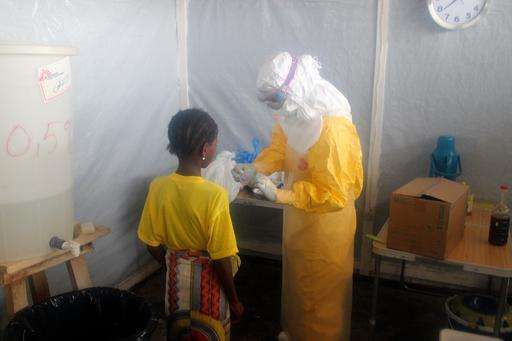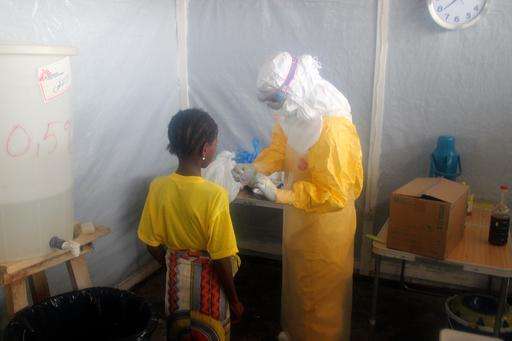Pascal Piguet is a Doctors Without Borders/Médecins Sans Frontières (MSF) logistician currently working in an Ebola treatment center in Guinea, where MSF is responding to an outbreak of the deadly disease. In this interview he describes his experience, and outlines the challenges faced by the staff working to treat the disease.
What does it mean to be in charge of logistics for an Ebola treatment center?
At the beginning, you’re doing crisis management: you’re discovering new things every day and you have to improvise. Everything gets more complicated and you have to pay attention to the little details that would seem inconsequential in any other emergency response.
Nothing’s temporary, and you can’t go back on your decisions. For example, you can’t reduce the size of the area where you’re treating the confirmed cases—once the area is infected, that can’t be undone. You have to think about all this beforehand. In a normal disease response, by contrast, you can change course according to how the situation develops. So when we built the isolation unit, we laid some extra slabs of concrete in case there was an increase in the number of patients. That allowed us to be able to act quickly to make the space bigger without having to work in the protective suits.
We set the isolation unit up on the existing cholera treatment center, but the space is small and the ground is sloping. These are the limitations you have to consider and take into account. Also, we had to think about how we’d get rid of contaminated water. Ebola doesn’t spread through water, but we needed to be sure that the water wouldn’t carry any contaminated objects, for example.
To build the facility, we had to work closely with the medical staff—how they saw the flow of patients going, et cetera. My job is to translate their ideal situations into something real. I am the person who brings it all down to earth, and has to make their dream a reality.
What are the difficulties you are coming up against today?
There are many. First of all, for now, none of the members of my team want to go into the treatment facility. So one of the challenges is to sensitize the Guinean staff about the facility so that they feel comfortable with the idea of going to work inside.
Also, a concern for stock and equipment management is that you need be sure that everything that goes into the isolation area doesn’t come out. Earlier, my scotch tape rolled inside the isolation area, so I can’t use it anymore. We’re 800 kilometers [about 500 miles] from the capital so the supply chain is already really long. Here we’re using so much more stuff than in a normal MSF intervention.
We also have issues with the furniture inside the unit. At the moment we’re mapping out the inside, with magnets on a layout plan for furniture in order to prepare for it each time we go in. We must know exactly what we’re being asked to do by the medical staff when we do. If they ask us to move a bed, or an object, we need to know we’re doing it right.
Each time we go in, we have to plan it down to the finest detail: the protective suits are so stifling that it’s hard to stay inside for more than 30 or 40 minutes, and we can only go in three or four times a day. When the medical staff ask us to move a patient, 15 minutes of discussion follow about which patient exactly, where the bed needs to go, and so on, just to make sure we’re doing it right. To prepare to go in, we have a 30 minute briefing about what we’re going to do, and we get all the equipment ready outside beforehand. By contrast, if we need to set up a [crowd-control] barrier [as we do in normal missions], we just have to unroll the line and put the stakes in the ground.
You have to prepare before going in when somebody’s died as well. We talk to the medical staff to find out what the person looked like; whether the body’s covered or not. Then we debrief upon exiting.
There is no specific treatment for Ebola—what can you do to keep patients comfortable while they're in the treatment center?
With the Zaire type of Ebola, up to 90 percent of people suffering from the disease die of it—so we know that most people in isolation will not come out.
We do the most we can for them, so whatever the patient wants, the patient gets. Up until now, the requests have been reasonable: special foods, new items of clothing . . . it’s easy to do and it does them some good. We really do try to do as much as possible for the patients. Inside the isolation zone, there’s even a terrace that lets patients see the light of day. But for those who aren’t mobile and can’t come out onto the terrace—the only thing they can see is our eyes [because of the protective gear worn by health workers]—it’s really hard.
We try to improve their lot. For example, we had patients who wanted coffee with milk in the mornings. The team spent an hour brainstorming—how would we get a new thermos in there only to destroy it each day? In the end, we decided that somebody in a protective suit would be positioned inside with the thermos, and somebody lightly suited up would arrive outside with another thermos. That way, they’d decant the hot water into the isolation area without making contact.
What are the risks for the staff?
We always have the safety of staff at the front of our minds, and as we go along we come up with the solutions that are the most appropriate and that carry the least risk. We try to take the concerns of the staff [into account] so that they feel at ease inside the facility, and so that they can concentrate on the medical work they’re doing without having to think about their safety. Constant attention has to be paid to all the details you wouldn’t normally have to consider.
Personally, I’m not afraid to go into the isolation zone. I think you get more confident the more you do it. Actually, I’m probably the person who knows the structure the best. And I’m really focused when I go in. We’re like astronauts in there: movements are slower, and I am always checking that there isn’t anybody around me. A metal bar that I’m moving could easily put a hole in a protective suit and put somebody in danger.
MSF is supporting the Guinean ministry of health in its attempts to stem the outbreak, which has seen 151 suspected cases and 95 deaths as of April 7, 2014, according to Guinean health officials.
"Nothing’s temporary, and you can’t go back on your decisions. For example, you can’t reduce the size of the area where you’re treating the confirmed cases—once the area is infected, that can’t be undone. You have to think about all this beforehand."
Pascal Piguet





